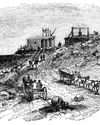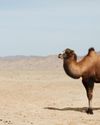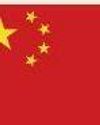An apparent contradiction, Chinese communism has thrived as a market economy situated the most populous country in the world as a rising superpower. But can it last?

Don’t say “communism” – say “socialism with Chinese characteristics”. That’s the official euphemism to describe China’s apparently contradictory social, political, and economic system: a one-party state with an all-powerful government which controls the judiciary and the National Assembly, and a thriving market economy where rapidly growing private and foreign businesses have to bear off-limits sectors where state-owned enterprises (SOE) benefit from monopoly or oligopoly structures.
It’s also a country where all land belongs to the state, and citizens pay for the right to use that land for 70 years. But, rampant speculation is blowing the property bubble bigger than ever seen before in China’s real estate market. The cocktail is being shaken up: Individualism and consumerism have given the boot to old-fashioned fraternity and collectivism.
“Getting rich is glorious,” Deng Xiaoping said when he decided to get rid of Mao’s most controversial and extreme interpretation of communism, implemented first with the Great Leap Forward (1958–60) and during the Cultural Revolution (1966–76). By 1979, an impoverished China opened its heavy doors to the world.
But not fully. It needed capital and know-how and foreign companies didn’t doubt that for a second: They entered in hordes to explore a cheap manufacturing base and to pioneer their business given the huge potential market for their products. In exchange, China got everything its leaders wanted: Protecting core sectors and enacting laws that required foreign companies to establish themselves in the country with joint ventures was a perfect means of achieving the transfer of technology.
This story is from the AG 04/2017 - 126 edition of ASIAN Geographic.
Start your 7-day Magzter GOLD free trial to access thousands of curated premium stories, and 9,000+ magazines and newspapers.
Already a subscriber ? Sign In
This story is from the AG 04/2017 - 126 edition of ASIAN Geographic.
Start your 7-day Magzter GOLD free trial to access thousands of curated premium stories, and 9,000+ magazines and newspapers.
Already a subscriber? Sign In

Revealed Silver
Known in Latin as argentum, originating from the Sanskrit word argunas meaning \"shining\", silver is often an overlooked metal in comparison to gold, though it has properties that make it a unique and special element.

Celebrating the 2023 Rolex Awards for Enterprise Laureate: Liu Shaochuang
As a part of the Perpetual Planet Initiative, the Rolex Awards for Enterprise continues to expand the initiative’s growing portfolio, supporting exceptional individuals with innovative projects in areas such as the environment, science and health, applied technology, cultural heritage, and exploration.

The Treasures of Tahiti and the Journey of Giants
For decades, French Polynesia's beguiling islands have adorned travel brochures, alluring honeymooners with turquoise lagoons, overwater bungalows, and lush volcanic peaks. Some 7,000 kilometres from its closest neighbours, and spread over five main island groups, the French territory's real treasures are not just what you see in the splashy brochures. Get ready for untamed, wild, ocean encounters.

Asian Blades
Historically, swords served as crucial tools for warfare and symbols of social status, shaping military strategies and cultural identities across the region. Fascinating objects found in museums, these ancient items of silverware are just as likely to be found in private collections around the world

Bear Witness REVISITED
Through soulful eyes we see ourselves These creatures sad and splendid For though they be confined to bars Flesh bodies crushed, tormented Their spirits burn with freedom's fight Mad, somewhat demented... Like the rusting strands of metal twine That hold their fate suspended Cruelty is an irony A stage for man To play his hand In wickedness or wonder

A Spectrum Of Scarlet: The Symbolic Red Of Asian Flags
A common thread that unites many Asian flags is the prominent use of red, a colour rich with symbolism

Curry: A World of Flavour, Tradition, and Culture
From its humble beginnings in India, the concept of "curry" has evolved into a culinary language understood around the world

The Power Of Asian Red Fruits - Discover 10 Nutrient-Rich Gems Of The East
In the vast tapestry of Nature, Asia has gifted the world an array of unique and vibrant fruits, particularly those in shades of red. These scarlet-hued gems, packed with flavour and nutrients, not only add a burst of colour to your plate but also carry valuable health benefits. From antioxidant-rich goji berries to the exotic dragon fruit, let's explore some of the most popular red fruits from Asia and discover why they should be part of your diet.

Bhutan: A World Of Its Own
With its majestic monasteries, red-robed monks, charming rural villages, and vibrant festivals, the Kingdom of Bhutan is a Himalayan paradise that promises an enriching travel experience like no other

Take The Red Pill
From the vermilion torii gates of Japan to the famed rust-hued walls of India's Agra Fort, the burgundy robes of Burmese monks to scarlet chillies drying in the Bangladeshi sun, red is the quintessential colour of Asia.